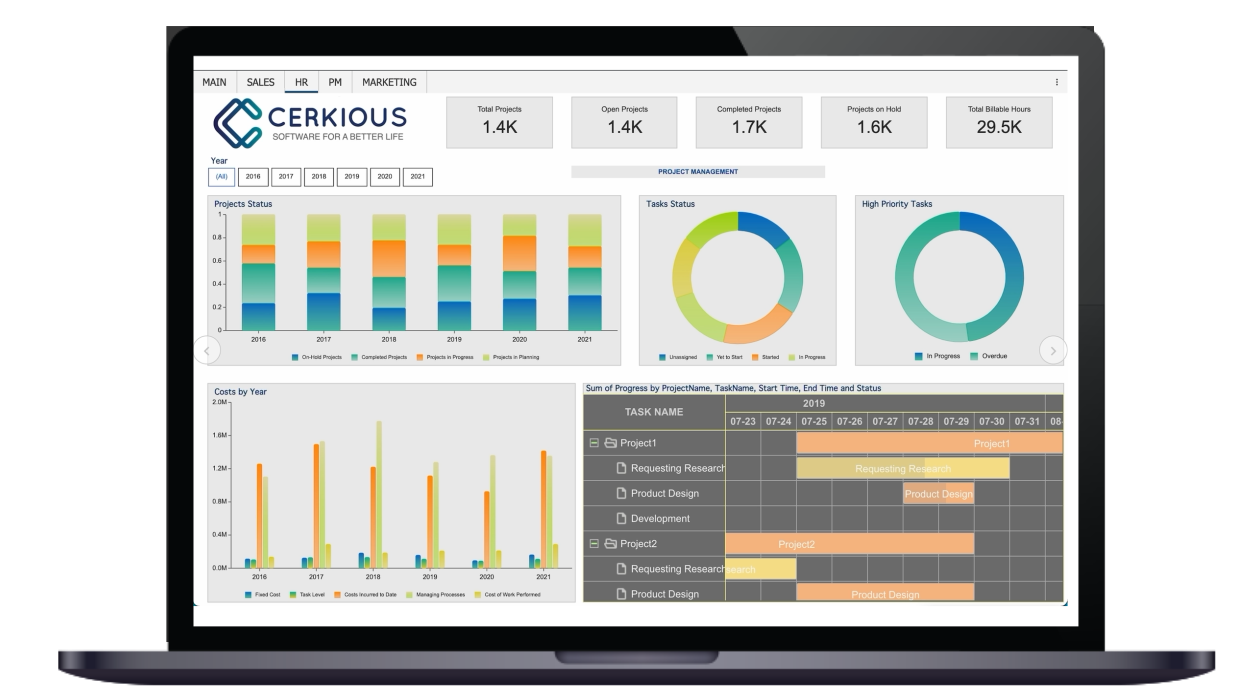Why Responsible Technology Begins with Data Governance
Every organization deals with data, but not every organization is leveraging their data as a business asset. But, as data continues to grow exponentially, treating that data as a business asset is becoming a competitive differentiator.
An Accenture study found that only 33% of firms “trust their data enough to use it effectively and derive value from it.” But if you don’t trust the quality of your data, then it’s hard to make decisions based on that data (and users will be less likely to use it to inform their decision-making).
That’s why data governance should be part and parcel of any business intelligence platform and data analytics strategy—underpinned by role-based permissions.
What is data governance?
Data governance is the process of managing data usage based on your organization’s internal policies, as well as external compliance and regulatory requirements. It’s important to train and educate your employees on data governance—not only to familiarize them with the rules, but also to promote buy-in.
“Effective data governance ensures that data is consistent and trustworthy and doesn’t get misused. It’s increasingly critical as organizations face new data privacy regulations and rely more and more on data analytics to help optimize operations and drive business decision-making,” according to TechTarget.
Data governance has a wide range of organizational benefits, from breaking down data siloes to ensuring regulatory compliance. But it can also provide more accurate analysis through improved data quality.
Creating a data governance program
Governance programs typically deal with structured, unstructured, and semi-structured data in data environments, which helps to improve the quality of data and, in turn, promote consistency across the organization.
It’s an essential component of BI since data inconsistencies and errors can affect the accuracy of data analytics, particularly as we see a shift toward self-service BI.
“Governance programs must make sure data is accurate and accessible for self-service users, but also ensure that those users—business analysts, executives, and citizen data scientists, among others—don’t misuse data or run afoul of data privacy and security restrictions,” according to the aforementionedTechTarget article.
Data governance plays a vital role in business intelligence. It’s accomplished through various tactics like role-based permissions, defining the meaning of data, tracking correct lineage, describing best practice to use data assets, etc.
In this article, we are going to focus on role-based permissions, which decouple access control from document sharing by mapping specific data access. So, in simpler terms, you can ensure the right people have the right access to the right data.
Why role-based permissions?
Role-based permissions involve grouping employees into specific roles or user groups, depending on their function in the business. These employees are then granted access rights to data in accordance to these roles or user groups. This practice helps to protect sensitive data while also ensuring employees have access to information needed to perform their jobs.
For system administrators, this reduces the burden of monitoring data access. But for ease of management, they should consider using a permissions model that grants access privileges to user roles, rather than to individual users.
For example, members of a user group might have permission to read a specific report, because it can help give them insight into the business as a whole, but not edit or modify the content, because they are not the experts in that department and do not fully understand the data.
Without role-based permissions, it’s easy to see how problems could arise. Maybe a user creates an ad-hoc report and sends it to people who aren’t authorized to view that data. Even if the report doesn’t contain confidential information, it might only be relevant to individual stakeholders. For example, an HR manager doesn’t need to see metrics on marketing campaigns.
How to set up role-based data governance
To use role-based permissions, identify the users who require access to your BI platform and create groups based on their business requirements (users can belong to one or more roles). You may want to get their feedback as part of this process to ensure you meet those requirements.
Once the groups are defined, decide which permissions to assign them, and then create roles for each group. Users are added to those defined roles, allowing them to safely share documents and resources with others in their group.
While a database administrator may be granted the right to query data from any database across the organization, a typical business user—such as in HR or finance—may be restricted to creating reports or dashboards, since they don’t need the functionality that a database administrator requires.
A strong data governance strategy will also help to secure your data through industry-standard protocols, such as OAuth2, OpenID Connect, Active Directory and ELAP. Look for an identity service that acts as a federation gateway for external security providers and offers granular data control for another layer of privacy.
Getting the most out of your BI tools
Business intelligence can help users gather, measure, secure, and visualize data to identify trends and metrics. But to get the most out of your BI tools—and to truly use your data as a business asset—data governance is the key ingredient.
Find out more about how Wyn offers built-in tools for data governance, security integration and automated document distribution—all with an easy-to-use interface for self-service BI.






























